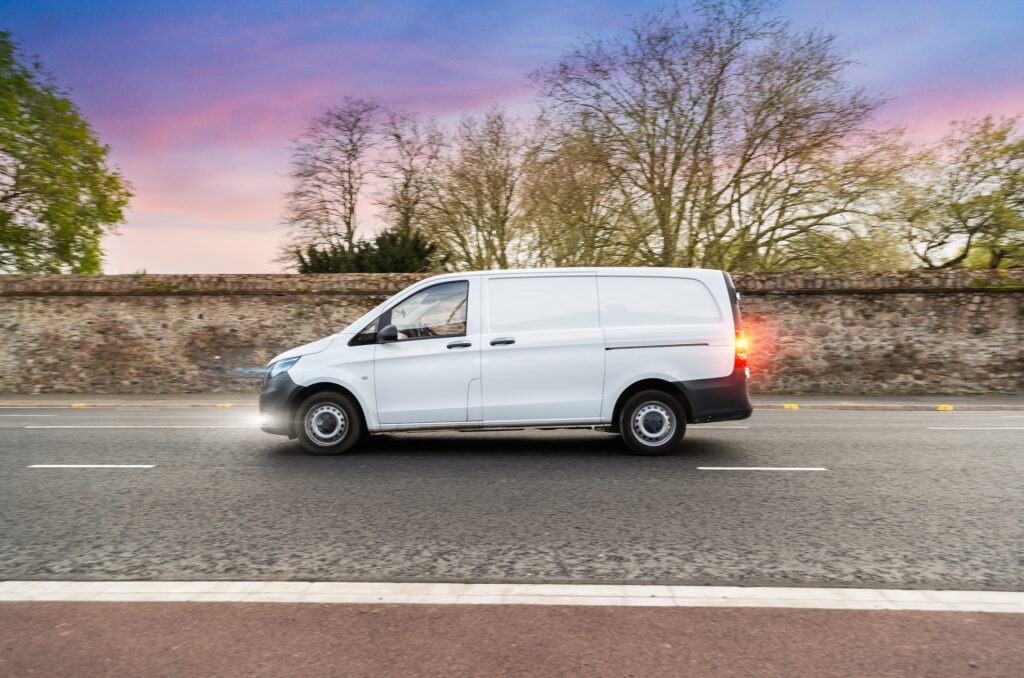UK used-LCV market sees quieter summer as registrations keep climbing
14 August 2023

While light-commercial vehicle (LCV) registrations kept climbing in July, the used-van market saw a quieter summer. Andy Picton, chief commercial vehicle editor at Glass’s (part of Autovista Group), examines the latest figures.
Registrations of LCVs increased for a seventh consecutive month in July, as confirmed by the latest figures from the Society of Motor Manufacturers and Traders (SMMT). A total of 26,990 new units hit the roads, equating to a year-on-year increase of 44.2%.
Last month’s figures outperformed the results from July 2019 (before the market was impacted by COVID-19), by 4.2%. In the year to date, a registrations total of 196,916 LCV units meant the industry grew by 20.7% on the same point 12 months ago.
All vans recorded an improvement last month, except for those under two tonnes. Vans weighing 2-2.5 tonnes gross vehicle weight (GVW) and 2.5-3.5 tonnes GVW, rose by 227.4% and 29.3% respectively. The latter, at 19,111 units, accounted for 70.8% of the overall market. Meanwhile, pickups posted a 48.3% increase. Registrations of vans under two tonnes fell by 40.9%, as operators opted for larger and more cost-efficient workhorses.
Ford leads the way
In the year to date, Ford holds the top two positions in the registrations table for LCVs under 3.5 tonnes. The Transit Custom lead the way, followed by the bigger Transit, then the Vauxhall Vivaro in third.
The monthly statistics for July show that the Ford Transit Custom and Transit retained first and second positions. Stellantis saw the Vauxhall Vivaro finish in third, with the Citroen Relay in sixth (1,130 units) and the Peugeot Partner in eighth (988 units).
The Volkswagen Transporter finished fourth, the Renault Trafic and Master claimed fifth and 10th (908 units) respectively, while the Mercedes-Benz Sprinter secured ninth with 944 units.
All-electric van registrations nearly doubled to 1,489 units in July (up 94.6%), but the technology still only accounts for 5.5% of the overall market. Year to date, battery-electric van registrations reached 10,292 units, a 16.1% increase on the first seven months of 2022 (8,865 units), but this year’s market share has so far fallen 0.2% to 5.2%. Accordingly, the SMMT trimmed its all-electric van forecasts for 2023, from 7.4% to 7.1%. July saw
The industry is set to be impacted by two political mandates in the coming years, and there are growing calls for amendments or delays. The zero-emission vehicle mandate is due to take effect next year, setting binding targets for zero-emission van production, and there is growing support for a lowering of those targets to help the market adapt.
There are also calls to delay the 2030 ban on new internal-combustion engine vehicle sales until 2035. However, any delay in the phase-out is likely to be damaging in both the short and medium term, with many operators already struggling with the practicalities of adopting EVs into their fleets. This is already having a knock-on effect in the used market, where speculation is breeding uncertainty resulting in pressure on electric-van residual values.
Volumes up
Greater volumes of used vans are entering the wholesale market. The large majority of these units are over five years old and with mileages that make the vehicle unattractive to many buyers. The average age of a used LCV sold in July increased from 81.9 months to 83.4 months. While the average mileage decreased by nearly 3.7% to 79,845 miles (128,498km) compared with June, this is still 414 miles more than 12 months ago.
Vehicle damage is more prevalent too, with repair costs increasing by over 25% year-on-year. Due to a shortage of parts and bodyshop availability, prepping stock is now taking between a month and six weeks, increasing time to sell.
Used values have softened across the board, however high prices continue to be paid for ‘ready to retail’ stock. Sales of electric vans are still struggling too. Although a growing number are available on the used market, demand is negligible. Price, performance and perceived lack of charging infrastructure are the usual barriers to adoption.
Quieter summer
The wholesale market has been noticeably quieter over the summer period, with many trade buyers reporting a downturn in business. Sales have slipped nearly 10% over the month, while the average sale price fell 5.2% in the same period, with an even larger 13.5% drop compared to July 2022.
Again, the used medium van sector was the most popular. These vehicles accounted for 31.5% of all auction sales, followed closely by the small van sector with 31.3%. Volumes of 4x4 stock sold accounted for only 13.7% of all sales, but attracted the strongest average prices of £13,938 (€16,172), down over £4,400 on June. Large vans covered more distance than any other model type at an average of 96,150 miles, a marked increase of nearly 5,500 miles compared with June.
First-time conversion rates for July increased by 2.9% to 74.6% overall and sat 5.2% higher year on year. This increase was reflected across all sectors with the medium panel van sector returning the best conversion rate of 75.6% (up 4.4% on June). The 4x4 segment recorded an increase of 3.8% to 75.1%, large vans held at 74%, while small vans rose to 73.8% (up 2.8%s).
Used vehicles observed for sale in the wholesale market in July remained static at nearly 42,000 units. 49.1% of all vehicles on sale were valued at £20,000 or more, while 34% were on sale for between £20,000 and £10,000. At the lower end of the market, those vehicles on sale in the £10,000 to £5,000 price bracket saw volumes increase to 12.5%, while those on sale for less than £5,000 remained at 4.4% of the overall market.



